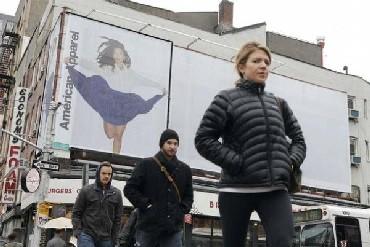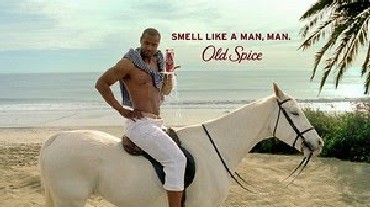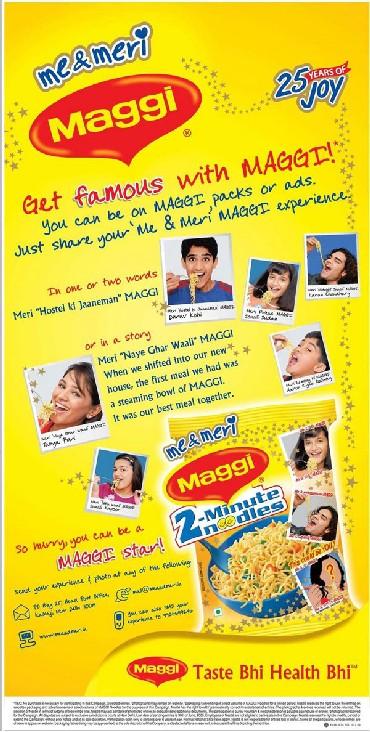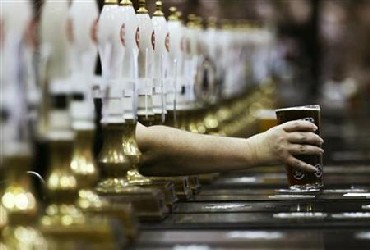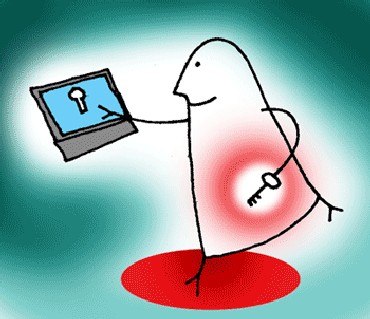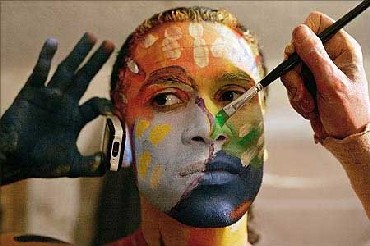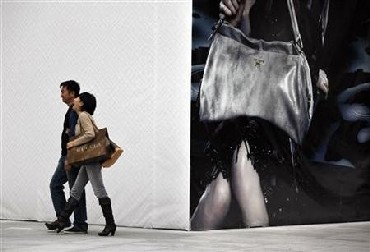 | « Back to article | Print this article |
How advertising is blending virtual, real worlds
Art mimics life. Advertising is no different. Advertisers continuously strive to come up with that one incisive insight to talk in a way consumers will instantly agree with.
From carefully crafted stories to celebrity endorsements, advertisers have an arsenal of techniques to convince the consumer.
There is a new addition to that arsenal - real users of their products. Suddenly these real people are all over the place - they can be spotted in ads on your television or in your newspaper, besides popping up on the net.
Of course, testimonial ads are nothing new. Celebrities have been made to dress down and give casual bytes a la candid camera.
Many a time lesser-known models have been passed off as real people. But very few of these marketers have dared to feature real users.
That is until now.
Click NEXT to read more...
How advertising is blending virtual, real worlds
With social networks becoming part of the consumer s life, more and more marketers are dabbling with user-generated content such as viral videos, instant tweets and active online communities.
Akshar Pillai, founder-owner of Mind Heist Media, a production and advertising agency, says, Realistic ads or even ads with real people are the marketer s attempts to marry the social media which they can t control and mainstream production which they can. They try to create a mainstream viral. Many brands have jumped on to the social networking bandwagon but are still figuring out how to monetise or regulate it.
Old Spice s Isaiah Mustafa campaign (The Man Your Man Could Smell Like by Wieden+Kennedy) is a classic example of advertising that includes real viewers.
For those who came in late, Old Spice created a series of personalised YouTube videos with Mustafa aimed at people who had posed questions for him through Facebook and Twitter. The Old Spice campaign suddenly made the 40-plus brand relevant to a whole new generation of consumers.
Click NEXT to read more...
How advertising is blending virtual, real worlds
Replicating the virtual in the real world, brands have turned to crowd-sourcing and now real users in their communication campaigns.
So real people are now launching new products, and are reinforcing a brand s commitment to the consumer at the time of rapid change.
Take Nestle Maggi s Me and Meri Maggi campaign that sought to remind consumers of their favourite brand when competition was roiling the waters.
Look at what Ford is doing for its entire marque worldwide. It has a global mandate to include real people in its communication to compete with more agile peers.
Research in Motion (RIM), which makes the Blackberry range of smartphones, also acted on a global precedent to create YouTube video ads to talk to non-users.
Himalaya Drug Company, Frito-Lay, Vodafone and Tata Docomo have all gone the crowd-sourcing path to get consumers to create some part of their communications or product.
Click NEXT to read more...
How advertising is blending virtual, real worlds
For the non-user
Ford s latest campaign, Swap Your Drive, is aimed at those who have never walked into any of its dealerships. It asked owners of other car brands to drive around equivalent Ford cars for a week.
Anurag Mehrotra, vice-president, marketing, Ford India, says, There are people who have come into our showrooms but not settled for our brand. At least they have given us a shot. But what about those who don t even consider our brand? We had to devise some way to bring in the avoiders who have not even experienced the cars once.
Ford had earlier given its new Fiesta to users for a 10-day drive to bring out what they considered the best features in the car. The company went on to create a television commercial and internet videos from the vignettes of the feedback from the four users.
Click NEXT to read more...
How advertising is blending virtual, real worlds
Global market research agency Synovate identified the people with equivalent cars (a hatchback for the Ford Figo, for example) who would be featured in the Swap Your Drive campaign.
Users were picked from Mumbai, Delhi and Ludhiana. The print ads and the internet video were devised in a way that they don t berate their existing cars but quote the users on their first impressions of the Ford car.
Archit Rakheja, co-owner of adventure company Geck&Co Adventurers, who drove the Fiesta on a 10-day road trip, says he has sent quite a few people to Ford showrooms to try the car out.
He routinely answers queries on Facebook about the Fiesta and had once gone back to the showroom to re-check a backseat query someone had posed.
Click NEXT to read more...
How advertising is blending virtual, real worlds
The Swap Your Drive campaign s credibility will be bolstered on the internet once the social media leg of the campaign is kicked off later this month.
On the ground, Ford is allowing dealers to take a call on whether to replicate the campaign by allowing customers to swap their drives with a car in their inventory.
At the dealers , one can walk in and use the standee s quick response code to play the videos of the different testimonies on their cellphones.
It is not the only brand to target the non-believers by roping in real people. RIM is another.
RIM India Director (marketing) Krishnadeep Baruah says, We wanted to convey to non-Blackberry users the advantages of owning a Blackberry such as the Blackberry Messenger (BBM).
Click NEXT to read more...
How advertising is blending virtual, real worlds
While Blackberry had cast fresh models for its mainstream ads targeting the youth, it found a trend through its consumer touchpoints - the Blackberry s Facebook page and the sales consultants at its stores.
Baruah says, We found that the BBM was helping widen the sphere of influence of its users. They were telling us about interest groups they had formed thanks to the BBM s easy networking.
RIM commissioned a string of videos to be shot with users of BBM and put them up on YouTube. From biking groups, boutique owners, disc jockeys to owners of kindergarten schools, BBM users talk about their instant group connect through the application. Chandni Mehta, owner of the day-care centre Jumping Genius, says the video shoot was unscripted.
Click NEXT to read more...
How advertising is blending virtual, real worlds
I got to talk about my work as well; so there was nothing to lose.
She uses BBM to send updates to the parents of the kids at the daycare centre and plans to put up the video on her social networks and forward the link to her work group as well. RIM again cast users for one of its new launches, the Torch.
RIM s digital spends in India have doubled over the last 18 months, according to Baruah. It remains to be seen if it will follow its US parent in portraying users of the BBM and Blackberry Torch in mainstream TV ads.
Click NEXT to read more...
How advertising is blending virtual, real worlds
Connecting with masses
While Ford and RIM spoke to the urban consumer, for Nestle s Maggi the challenge was going mass.
We don t want to restrict a campaign to just the internet because for Maggi, the communication has to have mass appeal, says Nestle General Manager (foods) Shivani Hegde.
Nestle turned to crowd-sourcing to bring in real people in its campaign. Marking the largest selling instant noodle Maggi s 25th anniversary in the country, it invited diehards to write in about what the brand meant to them.
The entries indicated for a mother Maggi meant an ally; for a newly-wed couple it meant a quick dinner; for students in a hostel it meant a midnight snack , says Hegde.
Some of these stories were picked up and splashed on Maggi s packaging. Nestle went on to feature three of the accounts in TV ads. It even came up with flavours that stood for the over-riding moods that users associated with Maggi, such as romance and adventure.
Click NEXT to read more...
How advertising is blending virtual, real worlds
On its part, Himalaya Drug Company turned to real users to source insights rather than depend on focus groups and creative agencies.
It went to colleges in Bangalore and asked students to come up with ideas for ads for its hand sanitiser, Pure Hands, for a cash prize. It stayed away from the online route.
Ramakant Sista, the marketing manager of the Himalaya Drug Company, says, We preferred feedback offline because it was quicker to analyse. We wanted to understand our core target audience, that is, out-of-home users. Hence college students were an important group.
The responses showed Himalaya that the female influencer had a strong role to play in the use of such a product by the family. Ramakant says, Once we are more confident of the logistics of such crowd-sourcing, we will extend the campaign to the net.
Click NEXT to read more...
How advertising is blending virtual, real worlds
When real users are involved, it can get difficult to control the whole process. Ford s Mehrotra agrees, The exercise is nerve-wracking because of a marketer s inherent urge to control the message.
Baruah points out, A scripted ad will be woven in a way that it communicates an idea favourably. With real users it is never so smooth.
Hari Krishnan, India head of Global Team Ford, the ad agency for Ford India, says, We had to place unobtrusive cameras in the car (when the ads were being shot) as well as moderators to put the four at ease.
Tata Steel got documentary-makers to shoot its new campaign that features both well-known people like mountaineer Bachendri Pal as well as its own employees.
Click NEXT to read more...
How advertising is blending virtual, real worlds
Sumanto Chattopadhyay, executive creative director, O&M, who oversaw the campaign, recalls, The documentary filmmakers had made it clear from the start that we could not tamper with the footage. That meant no scripts or plots. They went on reconnaissance and then shot the subjects so that they were not conscious of the camera.
Companies such as Ford ran auditions to gauge the camera-friendliness of the users it selected for its campaigns.
Nestle bypassed the challenge of directing real people because all it had to do was highlight the photo and the story of the user since the anecdote was the king for the campaign. Nestle s internal team validated the senders, though Hegde refuses to put a number to the responses.
Click NEXT to read more...
How advertising is blending virtual, real worlds
Beware of fakes
Executive Vice-President of Ignite Mudra Sudarshan Banerjee says that it is a task to make real people look camera-friendly, leading to fake ads.
He adds, Often the ads which look like they have real people in them are scripted and staged. Research has shown time and again that consumers trust each other a lot more than any paid-for ads. Even then, the key for most ads remains getting the insight right because even if the people are not real, the emotional connect alone can make the viewer relate to it. A testimonial is not looked upon as a good creative to begin with.
Even when using real people, brands are eschewing the plain vanilla testimonials. Mehrotra says, We needed to find a way to amplify testimonials. It is not just one more creative for us but our rallying point from now on.
Synovate Associate Director (automotive) Sumit Arora says, Ford has had the first mover advantage in using testimonials in a new way. Advertisers earlier have used testimonials in print ads. More automakers will follow suit because word of mouth matters a lot in such a high-involvement category.
Click NEXT to read more...
How advertising is blending virtual, real worlds
Currently, Toyota is also running a campaign which features its users testimonials on its cars features.
Pillai of Mind Heist Media, which produced some of RIM s YouTube videos, warns, With this trend catching on, viewers may suspect not all of them have real consumers. That is when brands will need to extend such campaigns back to the internet to establish the credibility of the participants.
Brands will be able to harness real users only if they have a following to begin with. Hegde points out, A brand needs to have that credibility so real users can come forward and swear by it. An emotional connect has to be there.
If the product can stand up to scrutiny, then advertisers will have access to a powerful and convincing medium.
Rather than a celebrity talking to you from a pedestal, the average consumer will instantly believe someone who can pass off as her next door neighbour, points out Pillai.
